
About UsThe Numismatic Bibliomania Society is a non-profit organization promoting numismatic literature. For more information please see our web site at coinbooks.org SubscriptionsThose wishing to become new E-Sylum subscribers (or wishing to Unsubscribe) can go to the following web page link MembershipThere is a membership application available on the web site Membership Application To join, print the application and return it with your check to the address printed on the application. Membership is only $15 to addresses in the U.S., $20 for First Class mail, and $25 elsewhere. For those without web access, write to: David M. Sundman, Secretary/TreasurerNumismatic Bibliomania
Society AsylumFor Asylum mailing address changes and other membership questions, contact David at this email address: dsundman@LittletonCoin.com SubmissionsTo submit items for publication in The E-Sylum, just Reply to this message, or write to the Editor at this address: whomren@coinlibrary.com
BUY THE BOOK BEFORE THE COINYou won't regret it! |
- WAYNE'S WORDS: THE E-SYLUM SEPTEMBER 14, 2008
- BOOK REVIEW: NUMISMATIC PHOTOGRAPHY BY MARK GOODMAN
- BOOK UPDATE: EARLY UNITED STATES QUARTERS 1796 - 1838 BY STEVE TOMPKINS
- K.P. AUSTIN OF SALISBURY, MARYLAND
- QUERY: OLDEST UNCUT SIGNATURE IN A NUMISMATIC BOOK
- J. N. T. LEVICK'S LIFETIME OF HOBBY ACCUMULATIONS
- MORE ON NUMISMATIST-PHARMACISTS (AND CHEMISTS)
- MORE ON BYRON REED AND HIS NUMISMATIC LIBRARY
- MORE ON BOIS DURCI
- QUERY: 1876 CENTENNIAL C.A.G.E MEDAL
- QUERY: NOAH'S ARK G.C.A MEDAL
- QUERY: LYMAN LOW'S JULY 1903 CATALOG SOUGHT FOR 1892-O MICRO HALF INFO
- QUERY: MYSTERY OF THE DUPLICATE ISBN
- ALAN LUEDEKING ON MUSEUM CONSERVATORSHIP
- QUERY: MOST POPULAR PORTRAITS ON COINS AND MEDALS
- WAYNE'S NUMISMATIC DIARY: SEPTEMBER 9, 2008
- ARTICLE: TREASURE IN THE CELLAR BROUGHT MORE TROUBLE THAN RICHES
- ARTICLE DISCUSSES "WORN, TORN & SOILED" U.S. COLONIAL PAPER MONEY
- ANA INVENTORIES AND RECATALOGS THE BEBEE U.S. PAPER MONEY COLLECTION
- JUDGE: BEP'S NEW MONEY DESIGN SHOULD ACCOMMODATE BLIND
- QUERY: WILL EBAY PAYMENT POLICY CHANGE AFFECT COLLECTIBLES MARKET?
- LLANTRISANT LOOKIE-LOO: ROYAL MINT GIVES DOTY A CUSTOM EDGE VIEW
- ROYALS PAY TRIBUTE TO VICTORIA CROSS AND GEORGE CROSS HEROES
- MISSING WWI MEDALS RETURNED TO NEW ZEALAND FAMILY AFTER 20 YEARS
- ARTICLE: BEWARE THE DARK SIDE OF COIN COLLECTING
- ARTICLE INTERVIEWS CANADIAN NUMISMATIST LES COPAN
- ARTICLE: GOLD COINS OF CARAUSIUS SOUGHT BE BRITISH MUSEUMS
- YOU MIGHT BE A NUMISMATIC BIBLIOPHILE IF ...
- FEATURED WEB PAGE: 1862 ARTICLE ON MASONIC NUMISMATICS
WAYNE'S WORDS: THE E-SYLUM SEPTEMBER 14, 2008
 Among our recent subscribers is Bill Souder,
courtesy of Paul Horner. Welcome aboard! We now have 1,186
subscribers.
Among our recent subscribers is Bill Souder,
courtesy of Paul Horner. Welcome aboard! We now have 1,186
subscribers.This issue includes a review of Numismatic Photography, and several responses to previous submissions and queries. New queries cover topics such as the oldest unopened numismatic book, some enigmatic medal inscriptions, and the most popular portrait subject on coins and medals. To learn if you just might be a numismatic bibliophile, read on. Have a great week, everyone!
Wayne Homren
Numismatic Bibliomania Society
BOOK REVIEW: NUMISMATIC PHOTOGRAPHY BY MARK GOODMAN
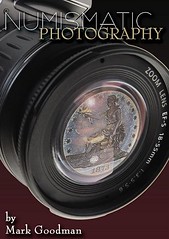 Book Review of Numismatic Photography by
Mark Goodman, published by Zyrus Press, Inc.
Book Review of Numismatic Photography by
Mark Goodman, published by Zyrus Press, Inc.A great many coin collectors soon turn to photography as a means of documenting their collection and a vehicle for sharing their latest .find. with fellow hobbyists. As author Mark Goodman observes, photographing coins has become more important as the visually-oriented internet and on-line auction sites have taken hold. Yet, for all its popularity with coin collectors, making a good photo of a favorite coin has proven to be a difficult, frustrating experience for most. Problems range from getting a large, detailed image, to correcting color, understanding lighting and dealing with glare form plastic coin holders. As noted in the author.s introduction, wide-spread availability of good quality digital cameras now allows the coin photographer to see results almost immediately. The replacement of film with CCDs and electronic circuitry virtually eliminates variables associated with color balance and photo processing.
Mr. Goodman.s first numismatic book is an impressive addition to the coin collector.s arsenal of knowledge. Through seventeen generously illustrated chapters plus two appendices, Mr. Goodman explains the selection of cameras and lenses, demystifies f-stops and shutter speeds, and carefully guides the novice through the numismatic photography process.
Other than Gerald Hoberman.s The Art of Coins and Their Photography, a scattering of articles in hobby publications and online, and an obligatory (usually useless) chapter in basic photography books, Mr. Goodman.s book has no competition for the coin photographer.s interest. Mr. Goodman concentrates on photographic technique leaving computer image adjustment for another project, or possibly a future book. The treatment of contrast is particularly good and will help collectors better understand how to approximate the in-hand .look. of a coin in their photographs.
Numismatic Photography is a .coin. book that should be read and re-read before the novice begins to make photos. Acquiring a basic understanding of photographic terminology, and how it applies to coins, is something few can do with a single reading. For those with some experience in photographing coins, one of the most helpful sections is Appendix B, .Troubleshooting.. This includes several concise tables that deal with specific photographic problems and their solutions. There is a good index but, unfortunately, no bibliography.
I would have liked to learn more about handling .Color and Luster. (Chapter 8) and .Imaging Slabs. (Chapter 15), but these chapters are too short to convey the knowledge that the author obviously possesses. Lastly, the novice coin photographer might benefit from a .walk through. of photographing a typical coin so they could better understand how the material fits together.
Who will benefit from Numismatic Photography? Obviously, coin collectors are the target audience. However, this book will also be of great value to working professional photographers who are occasionally asked to photograph coins and medals. Mr. Goodman.s technical understanding of the subject surpasses that found in most photography books.
Numismatic Photography is recommended for anyone interested in making better coin photos, or in learning how these images are made.
BOOK UPDATE: EARLY UNITED STATES QUARTERS 1796 - 1838 BY STEVE TOMPKINS
Steve M. Tompkins writes:
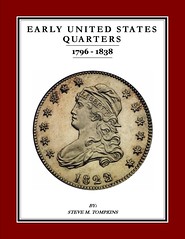 I just wanted to again thank everyone who
pre-purchased my new book EARLY UNITED STATES QUARTERS 1796 - 1838,
and say thanks for your patience in waiting to receive it! All of the
pre-orders have now been shipped and if you still have not received it
yet, it should be showing up any day. Please feel free to e-mail me if you
have any questions once you have had a chance to look through it. I also
want to announce that I have set up a new web site for the book. earlyusquarters.com
I just wanted to again thank everyone who
pre-purchased my new book EARLY UNITED STATES QUARTERS 1796 - 1838,
and say thanks for your patience in waiting to receive it! All of the
pre-orders have now been shipped and if you still have not received it
yet, it should be showing up any day. Please feel free to e-mail me if you
have any questions once you have had a chance to look through it. I also
want to announce that I have set up a new web site for the book. earlyusquarters.com I have added an errata page listing any errors that I have found in the book that was missed in editing, if anyone finds others please let me know and I will add them to the list. There is also a page listing "New Discoveries" for items that are found after the book was sent to the printer. Please take a look and let me know what you think.
Thanks,
Steve M. Tompkins
K.P. AUSTIN OF SALISBURY, MARYLAND
I never had the pleasure of meeting K.P. in person, but corresponded with him by mail and phone over the years. It took me years to track him down and first connect on the phone. I appreciate Julian Leidman's help with this.
I first noted K.P. Austin's name associated with the pedigrees on quite a few early silver dollars in Superior Stamp and Coin Co., Inc's. 1975 A.N.A. Sale. I later acquired Mr. and Mrs. Ostheimer's copy of the September 1968 Lester Merkin public auction sale. The Austin name showed up again, but not in the sale catalog. This time it was on the auction settlement laid into this copy of the catalog! I figured K.P. must have had quite a collection of the early dollars by die marriage. It turns out that he did.
K.P. was 96 years old when he passed away. He died of heart failure at his home in Salisbury, Maryland on Wednesday, July 2, 2008. There is a great quote in the obituary, "Many will remember him as the man with the jewelry, the man in the hat, the man in the slow moving purple Mercedes, the man who loved to play bridge and the man who loved to bet the horses." There was no mention of his being a coin collector or dealer.
It took some work to "recreate" K.P.'s early silver dollar die variety collection. Over the years, I managed to do this in three different ways!
I'm working on a more detailed article on K.P. Austin, hopefully to be published in the next issue of the John Reich Journal.
QUERY: OLDEST UNCUT SIGNATURE IN A NUMISMATIC BOOK
I bought it to read, not as a collector.s piece; however, when I went to open the pages, I found that they were still all bound together in uncut groups of 8 or 16 pages a time, as was often the case in those days. In other words, between 1866 and 2007 no-one had ever bothered to read the thing! You could however open it in some places along the spine, as that had in places fallen apart. So, I cut all the pages open with a sharp knife; well worthwhile, as I found some fascinating information within, and I am delighted with the book despite its tatty condition.
Can anyone else out there beat 141 years for a new numismatic book not being read?
We haven't addressed the issue of uncut signatures in some time. A signature is a group of pages (in multiples of 4 or 8) which as printed together from larger sheets, then folded, bound and (usually) cut in the course of assembling the final book. Can anyone beat David's record for the oldest uncut (and thus unread) signature in a numismatic publication? -Editor
PAGE CUTTING QUERY: WHAT TO DO WITH VIRGIN BOOKS (http://www.coinbooks.org/esylum_v10n15a08.html)
MORE ON OPENING VIRGIN BOOKS (http://www.coinbooks.org/esylum_v10n16a13.html)
| 'Extraordinary Merit' NLG Award Winner Coin Collecting Boards of the 1930s & 1940s: A Complete History, Catalog & Value Guide. $39.95 plus $5 shipping Buy directly from the author and get your copy signed. I also sell my several other books. POB 20892 Bradenton, FL 34204 | 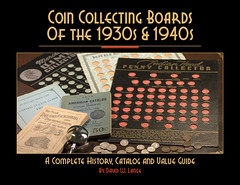 Visit my website: |
J. N. T. LEVICK'S LIFETIME OF HOBBY ACCUMULATIONS
Dave Hirt writes:I send along an interesting letter Levick wrote to Tom Elder, printed in The Elder Monthly June-July 1907 in which he announces that because of illness and doctors orders he must give up all his hobbies.
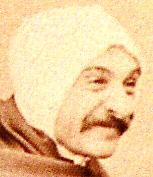 Some day there will be a grand house cleaning
and the junk man and the scavenger will have a cinch shoveling all my
gatherings for the last 50 years.
Some day there will be a grand house cleaning
and the junk man and the scavenger will have a cinch shoveling all my
gatherings for the last 50 years.There's no man in my neighborhood can boast of such a collection as my tin foils, wrappers, graphics, beers (unbottled), cigarettes, (smokeless), and tax paids.
Then I must have a hogshead of entire embossed envelopes saved for forty years past; theatre play bills, programmes, photographs, car and ferry tickets, 30 to 40 years old; 200,000 or more postmarks with stamps attached; engravings, philatelic literature, numismatic library, coins and stamps, catalogues- let alone match and medicine and other revenues; U S Postage, plate numbers. Then there are books, books, books, from one end of the house to the other. I want the numismatic, philatelic, and curio world to know that I have to throw up the sponge and be counted out.
He was a real collector! I would have loved to have been one of the scavenge rs.
Jim Nieswinter adds:
Tom DeLorey writes:
MORE ON NUMISMATIST-PHARMACISTS (AND CHEMISTS)
Jim Duncan writesClifford Mishler writes:
One is James A. Haxby, author of the Standard Catalog of United States Obsolete Bank Notes, (SCUSOBN) who is practicing the pharmacy trade in North Carolina.
Another is Walter D. Allan, who served as a .special consultant. on the SCUSOBN project, who practiced pharmacy at one time, but whom I believe is now retired. He lives in the Toronto area.
Both continue to be very active enthusiasts within the numismatic community. Jim continues to attend the Memphis Paper Money Show on a regular basis and is actively involved in data collection on U.S. obsoletes, while Walter is particularly active in the Canadian paper money collecting and research realms.
George Cuhaj also cited James Haxby as a pharmacist-numismatist. George also included
MORE ON BYRON REED AND HIS NUMISMATIC LIBRARY
Pete Smith writes:MORE ON BOIS DURCI
Jonathan included a link to this entry from a major U.S. auction company's online catalog. Mistakes like these can be easy to make, but are every auctioneer's nightmare.
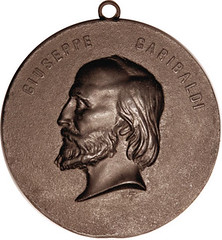

Here's a close-up of the pebbly surface, which is hardened wood, not bronze or copper. It's not *by* Bois Durci, it's *made of* bois durci.
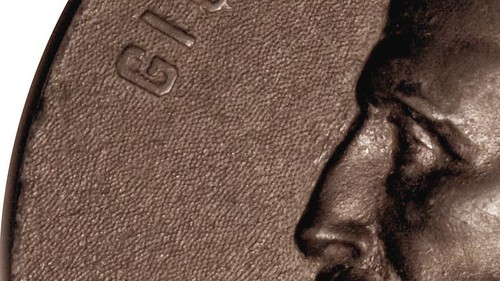

QUERY: 1876 CENTENNIAL C.A.G.E MEDAL
Ron Abler writes: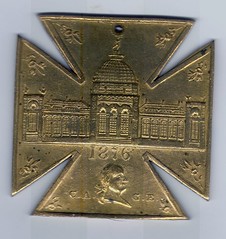 I.ve attached a scan of an 1876 medal that has
me stumped. It is obviously a Centennial medal of 1876, both from the date
and the depiction of the Art Gallery at the 1876 Philadelphia Expo. I
presume that the bust is that of Washington, however roughly executed. The
medal is included in Holland.s list of Centennial medals.
I.ve attached a scan of an 1876 medal that has
me stumped. It is obviously a Centennial medal of 1876, both from the date
and the depiction of the Art Gallery at the 1876 Philadelphia Expo. I
presume that the bust is that of Washington, however roughly executed. The
medal is included in Holland.s list of Centennial medals. My question has to do with the inscription. I have been entirely unsuccessful in figuring out what the C. A. G. E. stands for. I am always impressed at the breadth of knowledge among your readers. I.m hoping one of them can help me with this puzzle.
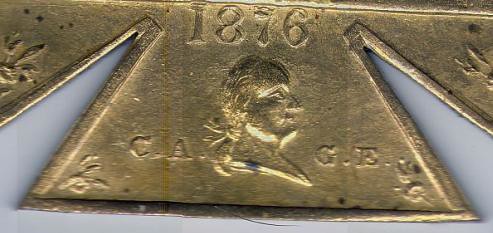
QUERY: NOAH'S ARK G.C.A MEDAL
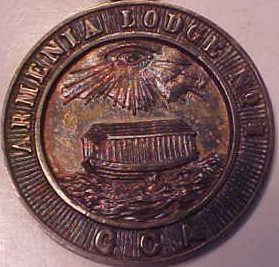 I recently procured a uniface 35-36 mm diameter
medal, suspended from a ribbon, that depicts Noah's Ark floating on the
waters with an all-seeing eye and rays behind clouds in the sky. The medal
is inscribed "ARMENIA LODGE No. 1" and "G C A". It seems to be a fraternal
jewel (Masonic or other) of some sort. I do not think it is directly
connected with any lodges in Armenia proper, or any fraternal lodges of
Armenian speakers. I have been unable to arrive at a plausible
identification of the initials G C A. I would appreciate any information
that might lead to an attribution of this enigmatic piece.
I recently procured a uniface 35-36 mm diameter
medal, suspended from a ribbon, that depicts Noah's Ark floating on the
waters with an all-seeing eye and rays behind clouds in the sky. The medal
is inscribed "ARMENIA LODGE No. 1" and "G C A". It seems to be a fraternal
jewel (Masonic or other) of some sort. I do not think it is directly
connected with any lodges in Armenia proper, or any fraternal lodges of
Armenian speakers. I have been unable to arrive at a plausible
identification of the initials G C A. I would appreciate any information
that might lead to an attribution of this enigmatic piece. QUERY: LYMAN LOW'S JULY 1903 CATALOG SOUGHT FOR 1892-O MICRO HALF INFO
Mark Borckardt, Senior Cataloger at Heritage Auction Galleries writes:If any reader has a copy of Low's July 1903 auction catalog, I would appreciate knowing the lot number and actual text of that particular coin. The Clapp Notebook indicates a purchase price of $2.25. Thank you. E-mail: MarkB@HA.com
QUERY: MYSTERY OF THE DUPLICATE ISBN
The books in question are Walter Breen's Encyclopedia of Early United States Cents and Dan Owens' California Coiners and Assayers. Both were published by Bowers & Merena Galleries in 2000 and were likely being prepared for publication simultaneously.
Another oddity I'm encountering is books whose cover title doesn't match that on the title page. An example is the second edition of Arlie Slabaugh's commemorative coin book published by Whitman in 1975. Its cover reads United States Commemorative Coinage, while its title page reads United States Commemorative Coins: The Drama of America as Told by Our Coins.
A more glaring example is the book on Type I double eagles by Douglas Winter and Adam Crum. Its cover reads An Insider's Guide to Collecting Type I Double Eagles, while its title page reads Type I Double Eagles, 1850-1866. Both books are newer editions of previous works by the same authors, and I suspect that their front covers were given updated titles by marketing people, while their title pages retained the old ones merely as an oversight.
I wonder how many other examples readers of The E-Sylum can find?
As for ISBNs, I'll admit I never paid close attention, but it's every publisher's nightmare to release a product with such a glaring error.
ALAN LUEDEKING ON MUSEUM CONSERVATORSHIP
Alan writes:
I cite as an exampIe a proof 1912 Un Csrdoba of Nicaragua, a rare coin indeed. The coin was housed in a little cardboard box, open to the elements, and free to slide around in it. In it was a little card with words to the effect that the coin was on loan from the Hispanic Society of America. Unable to place my fingers around the coin's edges to extract it, the first instinct was to put the tip of my index finger on the face of the coin and flip the box upside down so the coin would fall out. Needless to say, I did not do this.
However, the evidence of careless mishandling by others over the decades was glaring and shocking: A horrible black patch the size of an index fingertip, smack dab in the center of poor Mr. Csrdoba's face, otherwise surrounded by gleaming proof surfaces. The reverse of the coin was okay. I saw several other uncirculated coins with similar black patches in the center and nearly cried.
I believe that a dedicated collector is almost always a better conservator, researcher and sharer of knowledge than a large institution. It is true that private ownership may limit access to rare coins; however, if they are better cared for and more thoroughly studied, and eventually another collector will have the opportunity to possess them, that is better than having them improperly stored and subject to mishandling by careless individuals who are inadequately supervised.
I only hope that HSA will not sell the collection 'en bloc' to the Spanish government but will grant collectors, who over the centuries have been the true stewards of cultural and historic objects worth preserving, the opportunity to do so.
Dick Johnson adds this random thought:
As for Alan's sentiments on museum handling of collections, I know his view is shared by many, even those who acknowledge that the world would be diminished without the existence of these institutions. Mistakes can be made by private collectors and museum curators alike. -Editor
QUERY: MOST POPULAR PORTRAITS ON COINS AND MEDALS
Well, that's a challenge I like and is an ideal one for E-Sylum readers. Whose portrait has appeared on coins and medals more than any other?
The ad was signed "Fred" and he gave his email address. Fred is Reverend Fred Schumacher and he is a longtime collector of Martin Luther coins and medals. There is empathy involved here; he is a Lutheran minister - no surprise that he would collect Martin Luther.
Forty years ago I was selling Luther medals to Rev Fred. It is good to learn he is still active and still collecting (and proves the longevity of one's collecting topic!). I believe the last time I saw him was at Medallic Art Company when the firm struck a Martin Luther medal for him.
That is the reason he is asking the question. There are so many Martin Luther medals, and there are so many events in Luther's life that it seems like there is a Luther anniversary every few years or so. Ideal for issuing another Luther medal or coin, and the trend continues!
His query reminded me of a list I compiled years ago when I was a medal dealer. I titled it: World's Most Popular People Whose Portrait Appears on Medals (Or medals issued in their honor). A candidate made the list if a book was published listing the medals of one person. Here was my list:
- Napoleon.
- George Washington.
- Abraham Lincoln.
- Martin Luther.
- John F. Kennedy.
- Benjamin Franklin.
- Capt. James Cook.
- Admiral George Dewey.
- Winston Churchill.
- Admiral Vernon.
Then I listed some contenders; these would undoubtedly appear somewhere in the next ten slots: Charles Lindbergh, Thomas Edison, Robert E. Byrd, Albert Einstein, Lafayette, Theodore Roosevelt, Shakespeare.
I listed three women on medals in no particular order: Joan of Arc, Amelia Earhart, Maria Theresa.
I added a footnote that will please Rev Fred: Medals still being issued of Martin Luther (who someday may surpass Lincoln).
Since these are only portraits on medals, what would the list be if you factored in coins? Here is where E-Sylum readers come in. With your extensive knowledge of portraits on coins, what would be your top ten portrait list?
WAYNE'S NUMISMATIC DIARY: SEPTEMBER 9, 2008
I was the host of Tuesday's meeting of Nummis Nova, my Northern Virginia numismatic social group. Attendees were Joe Levine, Dave Schenkman, Roger Burdette, Wayne Herndon, Traci Poole and Julian Leidman.Topics of discussion included Roger's upcoming book on Peace Dollars, a snowstorm visit to Nathan Eglit in Chicago, the Izzy Switt 1933 double eagle legal battle, and microfiche copies of U.S. City Directories 1760-1860. Joe Levine passed around this amusing "City Rat Catcher" badge.
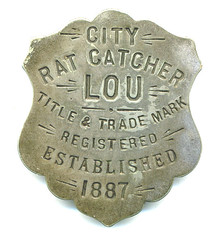
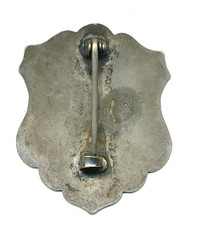
My topic was numismatic periodicals. I'm out of time to recap my presentation, but here are images of some of the items I passed around.
- Bound Volume 1 of the American Journal of Numismatics
- Bound Volume 1 of the Coin Collector's Journal (George Rode's copy)
- Reprint of Frossard's Numisma
- Bound Volumes 1-3 of the Canadian Antiquarian and Numismatic Journal, with bookplate of the Numismatic and Antiquarian Society of Philadelphia
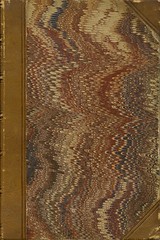
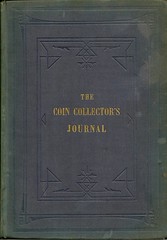
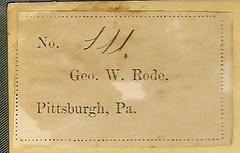
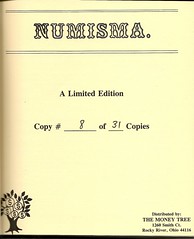
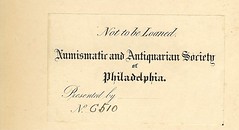
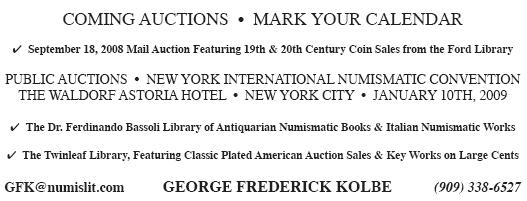
ARTICLE: TREASURE IN THE CELLAR BROUGHT MORE TROUBLE THAN RICHES
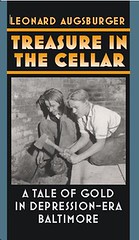 The story of two Baltimore teenagers and their
random discovery of a cache of gold coins in a copper jug while digging in
the dirt cellar floor of a three-story rowhouse at 132 S. Eden St. became
a national story during the height of the Depression.
The story of two Baltimore teenagers and their
random discovery of a cache of gold coins in a copper jug while digging in
the dirt cellar floor of a three-story rowhouse at 132 S. Eden St. became
a national story during the height of the Depression.Theodore Jones, 16, and Henry Grob, 15, both from fatherless families who were on relief, had formed a club, the "Rinky-Dinky-Doos," and were busy digging a hole on the warm afternoon of Aug. 31, 1934, in the floor of the Eden Street tenement where Jones and his mother resided.
Newspaper accounts from the time described the booty the boys were probably burying as "secret club papers" or "cards, dice and chips."
Suddenly, while digging, Jones' shovel struck something. He reached into the hole and pulled out a round medal coin.
"Look!" he exclaimed to Grob, "here's a medal," The Sun reported at the time.
Grob replied, "You're crazy. That's a $20 gold piece."
The boys began to furiously excavate the corner of the cellar.
"I was digging in that hole - hands, elbows, knees and everything," Jones told a Sun reporter.
"After more than half the hoard had been scratched out, they found the container it had been in - a gallon can - now more than half-rotted away. With the coins, glittering through their gold mold, scattered around them, they sat on the dirt floor and dreamed dreams of what they would do with their wealth," the newspaper reported.
What the boys had unearthed in two separate pots were 3,558 gold coins that dated from the 1830s, 1840s and 1850s, worth a face value of $11,200. Today, their discovery would be worth more than $10 million.
Hours after their discovery, the two youths walked into the Eastern District police station carrying the fortune, which had been stashed in cigar boxes and leather bags.
Officers at the station were "incredulous" at the sheer volume of what the boys had brought in to show them, The Sun observed.
The Great Baltimore Gold Rush of 1934 and the woeful tale of its two instigators is the subject of a new book, Treasure in the Cellar: A Tale of Gold in Depression-Era Baltimore by Leonard Augsburger, published last week by the Maryland Historical Society.
Augsburger, 45, a Chicago telecommunications software engineer who lives in Vernon Hills, Ill., has been a lifelong coin collector.
Augsburger, in a recent telephone interview, said he had been searching old coin magazines looking for a book topic when he stumbled upon the saga of Jones and Grob.
The story of the gold find, resultant court battles over ownership and coin auctions had long faded from public memory.
"I thought, there's got to be more here, and that's how I got it going," he said.
The book took Augsburger five years of research as he traveled back and forth between Illinois and Baltimore, checking out leads and census records, locating family members associated with the case, reading old microfilmed newspapers and legal decisions.
"One thing that struck me, was how little people know about the case today," he said. "When I contacted Harry O. Levin's daughter, who lives in Florida and whose father was the attorney for Grob and Jones, she said she never heard of the case."
As to the coins, Augsburger said, "the whereabouts of only a handful of them is known today."
Augsburger will speak about Treasure in the Cellar at 4 p.m. Sept. 28 at the Baltimore Book Festival.
To read the complete article, see: Treasure in the cellar brought more trouble than riches (http://www.baltimoresun.com/services/newspaper/printedition
/sunday/ideas/bal-id.backstory07sep07,0,1638465.column)
ARTICLE DISCUSSES "WORN, TORN & SOILED" U.S. COLONIAL PAPER MONEY
Note that I've not attempted to match up the illustrations with the text I selected. Lazy, I know - "Bad, Editor, Bad!" Slap me with a wet mouse cord if you must, but be sure to check out the complete article as published. -Editor
Between 1690, when Massachusetts issued #7,000 of currency to pay for a military expedition against Canada, and 1789, when George Washington was chosen as our first President, over 100,000 different bills in many different denominations were issued to meet an extraordinarily wide arrange of financial needs. Because paper money was typically numbered by hand and often carried multiple signatures, even the most avid collectors are faced with an obviously impossible task of attempting to acquire well over half a million pieces if they with to assemble a collection with specimens carrying all known signature combinations.
Although a sizeable number of paper money authorizations were for what we would consider customary financial purposes, a number of emissions are a far cry from our concepts of typical. Georgia issued bills .for the encouragement of SETTLERS and rebuilding the COURT-HOUSE in Savannah.. Pennsylvania emitted bills to build jails, workhouses and poorhouses.
Because paper money was money, it was valuable and because it was valuable, it was repaired if it was torn. Common mending methods include repairs done with pins, glue, paper tape and sealing wax, newspaper, old letters, and those sewn with needle & thread! Even in shambles it moved from hand-to-hand, and in some Southern colonies, especially North Carolina, was customarily endorsed as it was transferred.
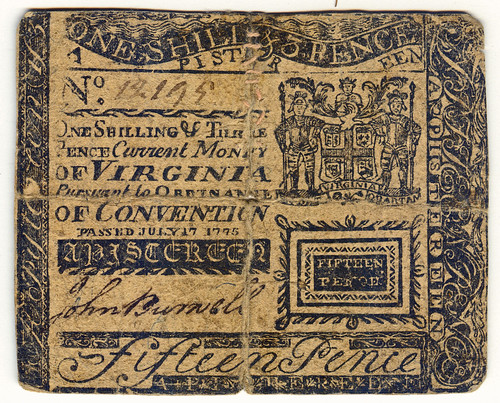
Examination of well circulated heavily repaired colonial notes provides intriguing glimpses into the contemporary thoughts, ideas and events current in our colonial society. The reverse of the illustrated heavily threaded stitched North Carolina five shillings April 4, 1748 note discloses that it is the remnants of a newspaper carrying marriage and death announcements plus giving the very odd hint of a reference to Guy Fawkes who attempted to blowup the British House of Parliament in 1605!!! Even more evocative is the Delaware, February 28, 1746 20 shillings note. It is backed by a page from a German language medical volume giving advice on when and how a person should be bled for health purposes.
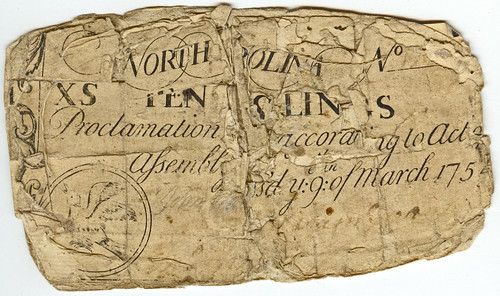
Any reviews of colonial paper usage patterns also must include the typical practice of the endorsing of notes. Most commonly seen on North Carolina notes, the buyers or purchasers in commercial transactions signed their names on the reverses of the currency being paid to the seller of the product or services. With this safety net in place, should a note turn out to be counterfeit, it could be traced back to its scandalous source, in theory.
As a consequence, there are multiple endorsements on the reverse of many issues. Not only were North Carolina bills heavily endorsed when they were first put into circulation, some ultimately had to be backed and these repaired bills were then endorsed on the added backing. The illustrated #5 note of January 28, 1758 remained in circulation for more than fifteen years as indicted by the endorsement of Joseph Whitfield on December 3, 1773. Clearly, this piece of currency had been widely accepted for an extended period, despite its extensive use and obvious wear, when it could have been retired earlier and terminally shredded.
Today, many try to acquire only the best surviving examples, but it is readily apparent that worn, torn, heavily used specimens have intriguing historical stories to tell. Thus, they are so much more than simply worn out pieces of paper, and rightfully deserve not only attention and study, but inclusion in the holdings of those seeking to collect colonial America.s real paper money!
To view a slide show of colonial paper money images from the article, see: Williamsburg Colonial Paper Money (http://www.flickr.com/photos/coinbooks/sets/72157607235885286/show/)
ANA INVENTORIES AND RECATALOGS THE BEBEE U.S. PAPER MONEY COLLECTION
Also in the September 2008 issue of The Numismatist from the American Numismatic Association is a column by Douglas Mudd, Curator of the ANA's Edward C. Rochette Money Museum. The column describes the current effort to review and recatalog the museum's holdings of U.S. paper money donated by dealers Aubrey and Adeline Bebee. The collection, donated in 1988, includes over 900 individual notes and uncut sheets. Mark Hays, a museum volunteer since 2000 has been making images of the notes for the collection inventory and updating or correcting catalog entries. The images will also become available online someday.As a preview, Doug forwarded images of some Bebee notes that are going to appear in the ANA's upcoming Civil War exhibit. They're beauties!
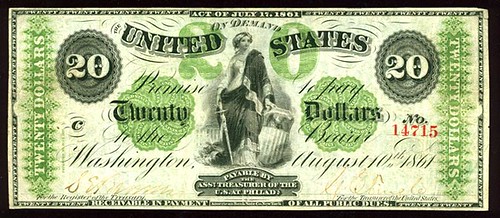
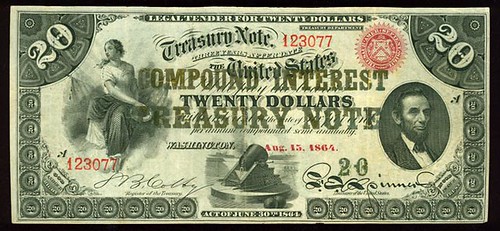
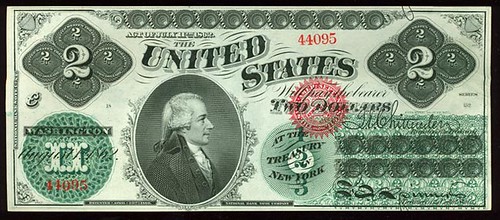
JUDGE: BEP'S NEW MONEY DESIGN SHOULD ACCOMMODATE BLIND
U.S. District Judge James Robertson said he would not allow the Treasury Department to go at its own pace as it complies with a May ruling that U.S. paper money discriminates against the blind.
Treasury officials have hired a contractor to investigate ways to help the blind differentiate between bills, perhaps by printing different sizes or including raised numbers. Government attorneys urged the judge to let that process play out and not interfere with anti-counterfeiting redesigns that are already in process.
Robertson was not persuaded.
"The Treasury Department is not going to just conduct this on its own schedule and its own terms. Let that be clear," he said.
Robertson ordered attorneys for the government to meet with the American Council of the Blind, which brought the lawsuit, and come up with a schedule that requires changes in the next generation of bills.
The next $100 design could be printed as early as this fall and Robertson said those bills won't be affected. But subsequent designs should be able to solve the problem, the judge said.
To read the complete article, see: Judge: New money design should accommodate blind (http://ap.google.com/article/ALeqM5jeRpdw57AGT-lesQwRkHf3xmkomwD9300THG0)
THE BOOK BAZARRE
QUERY: WILL EBAY PAYMENT POLICY CHANGE AFFECT COLLECTIBLES MARKET?
Last week we quoted from a newspaper article which included this passage:Eric Holcomb writes:
I feel that this will have a negative impact on numismatic sales on eBay. There are still many buyers who prefer to use checks and money orders. Perhaps they.re near their credit limit, or perhaps it.s true that they.re trying to hide their purchases, but this is not something that eBay should pass judgment on and restrict people.s freedom of choice in payment methods.
At a minimum, it will increase my expenses as a seller and force me to charge higher fees to my consignors. I also suspect that some smaller sellers will simply .drop out,. result in a less interesting variety of collectible items for purchase on eBay.
What do other readers think of this policy change?
LLANTRISANT LOOKIE-LOO: ROYAL MINT GIVES DOTY A CUSTOM EDGE VIEW
Regarding our recent discussions on edge reeding, Richard Doty of the National Numismatic Collection at the Smithsonian Institution writes:I wondered how they got that edge on the new coins. So Graham walked over to the shop foreman, said something to him. The foreman nodded, beckoned me over. AND THEY SLOWED THE ENTIRE PRODUCTION TO A CRAWL, SO I COULD SEE HOW THE EDGES WERE APPLIED. Now, that.s class!
ROYALS PAY TRIBUTE TO VICTORIA CROSS AND GEORGE CROSS HEROES
Among those invited to a royal reception at St James's Palace in London were Lance-Corporal Johnson Beharry, decorated for twice saving members of his unit from ambushes in Iraq four years ago, and Margaret Purves, who rescued a boy scout and his leader from the sea aged 14 in 1949.
Also among the day's heroes were Henry Flintoff, who at the age of 13 rescued a farmer from a bull in 1944, and Dr Dick Butson, honoured for a 1947 Antarctic rescue operation.
Despite their courage some of Prince Charles' guests apparently find being in the spotlight at the biennial event a little nervewracking, though.
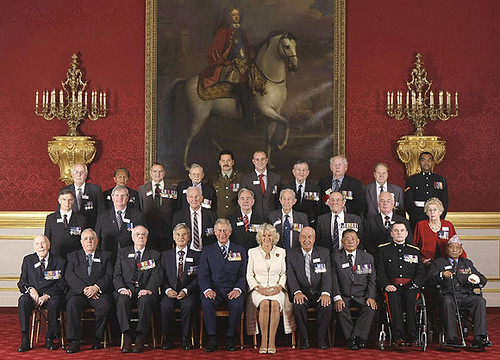
To read the complete article, see: Royals pay tribute to Victoria Cross and George Cross heroes (http://www.hellomagazine.com/royalty/2008/09/10/charles-war-veterans/)
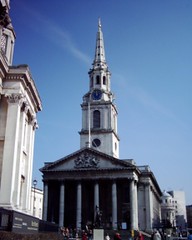
To read the complete article, see: Royals attend gallantry service (http://ukpress.google.com/article/ALeqM5glvwVMdlH8o7P1NrSau8pOGmzNJQ)
MISSING WWI MEDALS RETURNED TO NEW ZEALAND FAMILY AFTER 20 YEARS
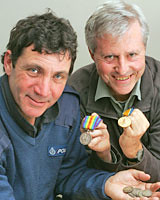 Exactly where these World War I medals have
spent the past two decades will probably remain a mystery.
Exactly where these World War I medals have
spent the past two decades will probably remain a mystery.But whatever their story, Aucklander Paul Hitchfield, the grandson of the soldier they belonged to, is rapt to have them back.
Auckland police found the medals - engraved with "Gunner Percy James McCabe" - in a stolen Subaru driven by a career criminal after a police chase in North Shore City in March 2007.
Officers were forced to wait for the court process before they could return them to their rightful owner.
Constable Martin Renouf turned to the Herald when the New Zealand Army Museum at Waiouru and the national Army archives could not lead him to the soldier's surviving family.
The Herald tracked down Mr Hitchfield, who was delighted to be re-united with the medals last night.
A spokeswoman at the Waiouru Army Museum said the two medals were known as the British War Medal and the Victory Medal, which were awarded to most soldiers in World War I.
To read the complete article, see: Medals returned - but their adventures remain a mystery (http://www.nzherald.co.nz/crime/news/article.cfm?c_id=30&objectid=10531025)
ARTICLE: BEWARE THE DARK SIDE OF COIN COLLECTING
An E-Sylum reader writes:But when it comes to buying and selling coins, all that glitters may not always be a good deal. In fact, one Houston attorney said sometimes, it can be downright fraudulent.
But with other investments, like stocks, doing so badly, telemarketers are peddling gold coins as a great alternative.
The Texas Attorney General said those high-pressure salespeople are targeting senior citizens. Gibson has sued dealers in both Beaumont and Austin.
.The problem is not that these coins are fake,. Gibson said. .The problem comes at the price these coins are being sold..
And if you get a call from a coin telemarketer, hang up.
In tough times, selling old coins can be a new source of income, but buying them as investments should be calculated with caution.
To read the complete article, see: Buyer beware: The dark side of coin collecting (http://www.txcn.com/sharedcontent/dws/txcn/
houston/stories/khou080909_tnt_coin_collecting_investments.5cfa03c2.html)
ARTICLE INTERVIEWS CANADIAN NUMISMATIST LES COPAN
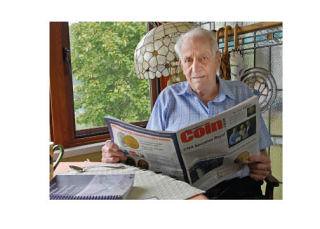 Coin collecting isn.t a science unless you happen
to be a practising numismatic.
Coin collecting isn.t a science unless you happen
to be a practising numismatic. For 53 years Les Copan has been studying coins, tokens and other forms of currency, developing significant collections of his own along the way, as a member of what is now called the Royal Canadian Numismatic Association and an acting Fellow of the Canadian Numismatic Research Society.
Currency, as well as medals, says Copan, are also historically invaluable as they can depict the images of past leaders, events or cultural practices that might not otherwise be available.
.Anything else gets destroyed over time but the medal holds,. said Copan. .I saw an archaeologist who gave a talk with a slide show showing the importance of coins. He showed the colosseum in Rome and around the top there.s a series of notches, and for many years they couldn.t figure out exactly what they were for. Then somebody found a coin in a dig that illustrated how it was back 2,000 years ago. Evidently the notches were used to hold supports..
Copan.s foray into numismatics began in childhood at his parent.s Vancouver candy store. Coins and other foreign currency taken in at the store were collected in a jar.
.My mother used to say everybody should have a hobby,. said Copan. .She said to my older brother, .you can have the stamps,. and she said to me .you can have the coins...
Copan says you become a true collector when you buy your first coin, as opposed to picking it out of loose change. But he warns, collecting requires serious, long-term commitment, driven by a love for coins and coin collecting, as opposed to hopes of financial gain.
To read the complete article, see: Currency offers more than face-value (http://www.bclocalnews.com/bc_thompson_nicola/eaglevalleynews
/lifestyles/28127309.html)
ARTICLE: GOLD COINS OF CARAUSIUS SOUGHT BE BRITISH MUSEUMS
Derby Museum and Art Gallery is now bidding to buy the Roman coins to keep them in Derbyshire, but at present is under some pressure to find the funding.
The two gold coins both date from the third century and were struck in the reign of Carausius (AD 286-93), with only 23 other known examples having been found.
One of the Ashbourne coins (above) caused particular excitement, coming from the London mint, the only known example of its type. There are though 14 other known gold coins from this mint.
The other coin (below left) was minted in Rouen - again very rare - only the 10th gold coin recorded for the mint, but the same as three other known specimens.
Both coins were found in the Ashbourne area by Derrick Fretwell, when he was tidying up after excavation work on his own land.
At first he thought the coin was a button and slipped it into his pocket and it was only later when he washed the dirt off under the tap that he realised it was pristine gold.
Anja Rohde, who shares the post of finds liaison officer at Derby Museum, took in the coins from Mr Fretwell and sent them off to the British Museum where they were described as "extremely rare".
Yesterday Anja Rohde confirmed that the coins had now been valued at the British Museum and negotiations were in progress for acquiring them.
To read the complete article, see: Gold coins rescue bid (http://new.ashbournenewstelegraph.co.uk/
ashbournenewstelegraph-news/displayarticle.asp?id=345543)
YOU MIGHT BE A NUMISMATIC BIBLIOPHILE IF ...
Brad Karoleff writes:
P.S. Don't tell my wife about this email!
Dick Johnson writes:
Paul Horner writes:
You might (not) be a numismatic bibliophile if the recycle bin is occasionally full of old issues of CoinWorld or Numismatic News.
You might be a numismatic bibliophile if the most prominate bookshelves in your home are filled with numismatic titles.
You might be a numismatic bibliophile if the wife and kids ever have to explain numismatic terms to visitors.
You might be a numismatic bibliophile if there is a sign by your door that reads "Check all coins and currency" along with a copy of Friedburg and a Redbook.
You might be a numismatic bibliophile if you dread having your friend the fire marshal over because he might see the stacks of old CoinWorld, Bank Note Reporter, and Numismatic News stacked to the ceiling in the back room.
You might be a numismatic bibliophile if your e-mail address book looks like who's who of numismatic book sellers.
You might be a numismatic bibliophile if you print out hard copies of E-Sylum every week.
You might be a numismatic bibliophile if the wifes cookbooks had to "temporarily" go under the sink because you found a few bound volumes of the Colonial News Letter and needed a quick place to shelve them.
You might be a numismatic bibliophile if you spend 3 weeks planning a family vacation by marking the road atlas with every used book store, thrift shop and flea market within 50 miles of the route.
You might be a numismatic bibliophile if you stop at every Goodwill, Salvation Army, & Thrift store you pass "just in case".
You might be a numismatic bibliophile if you stop at flea markets, used book stores and yard sales with books.
You might be a numismatic bibliophile if the back seat of your mini van is replaced with a mobile bookshelf before leaving on a family vacation. "Don't put stuff on there, we're gonna need the shelf space"!
You might be a numismatic bibliophile if the family knows that every other stop is "just a minute for a quick look" that can turn into a couple of hours if a "Coins & Stamps" section is found.
You might be a numismatic bibliophile if gas, lunch and potty breaks are taken at the "Big Red Dots" in the road atlas.
You might be a numismatic bibliophile if you have to find a "Pack & Ship" to send a few fantastic bargains home, since the shelves in the minivan are full.
You might be a numismatic bibliophile if one of the stops on the vacation is to tour the ANS library. "Honey, the kids will love it!".
You might be a numismatic bibliophile if the shipping to send "over 500" coin auction catalogues and books home cost more than the gas for the family vacation.
You might be a numismatic bibliophile if you bought an old Bookmobile on Ebay to refurbish for next years vacation. It will only need one seat because you have been informed you will be going alone.
You might be a numismatic bibliophile if you need a push cart to haul your "critical" references on at a coin show.
You might be a numismatic bibliophile if the standing gift for a newborn is a copy of the Redbook for his birth year.
You might be a numismatic bibliophile if the standing gift for graduations, weddings, Bar Mitzvah's, birthdays, Christmas, etc. etc. etc. is a coin or currency book.
You might be a numismatic bibliophile if you buy case lots of new books for Christmas gifts "One stop shopping".
You might be a numismatic bibliophile if you try to discuss the latest issue of the "North Carolina Numismatic Scrapbook" with the barber.
You might be a numismatic bibliophile if you quiz the dentist why he doesn't have any coin titles in the waiting room.
You might be a numismatic bibliophile if you give the homeless man with the sign an old copy of a Redbook.
You might be a numismatic bibliophile if you have fleeting thoughts of the attic caving in from the weight of complete runs of Coinage, Coins, World Coin News and others.
You might be a numismatic bibliophile if you tell your gradeschoolers that the paper recycling drive is a "dirty communist plot" and they WILL NOT participate.
You might be a numismatic bibliophile if you contact a paper conservator and inquire about having a torn page repaired on your Winter 2003 issue of "Blue Ridge News".
You might be a numismatic bibliophile if you keep every issue of "Paper Money" in its original mailing envelope.
You might be a numismatic bibliophile if you have two subscriptions to CoinWorld: a "reading copy" and a "saving copy" (but you keep both).
You might be a numismatic bibliophile if you have 15 flash drives that you download articles, books, images and such onto. Each flash drive is a separate category of course. And you need more. Some are full.
You might be a numismatic bibliophile if you gave up on compiling an index of what you have.
You might be a numismatic bibliophile if your coin collection looks like a dealers junk box, but your library fills up the back bedroom, the attic, the former cookbook shelf, and the bathroom cabinet.
You might be a numismatic bibliophile if at 10 years old you tried to develop a photographic memory by reading every number in your first Redbook.
You might be a numismatic bibliophile if you double check the trash before the wife hauls it to the street.
You might be a numismatic bibliophile if you just can't understand what people see in old comic books and baseball cards.
You might be a numismatic bibliophile if you have sent letters to "Jeopardy" with plenty of numismatic questions they could ask.
You might be a numismatic bibliophile if you call in to "Book Talk" on the radio to talk about the new edition of "Newman".
You might be a numismatic bibliophile if "Book Talk" has your number blocked.
You might be a numismatic bibliophile if you have a standing cash offer with the garbage man to bring you any coin and currency books he finds.
You might be a numismatic bibliophile if you work at a book store to get the employee discount on special orders for yourself.
You might be a numismatic bibliophile if you visited the McCain headquarters to get a list of his lucky coins. You took a Redbook just in case he needed one.
You might be a numismatic bibliophile if you can quote all the directors of the mint, but have no idea who is running for president, (Except McCain, he has coins).
You might be a numismatic bibliophile if you keep every piece of correspondence you get (aka junk mail) from every auction house.
You might be a numismatic bibliophile if you carefully save the coin and medal ads from "Parade" every Sunday and file them.
You might be a numismatic bibliophile if you record the "Shoppers Network" when they sell coins & currency.
You might be a numismatic bibliophile if you talked to a banker about taking out a 3rd mortgage to attend the next numismatic literature sale.
You might be a numismatic bibliophile if your family & friends think you are nuts.
FEATURED WEB PAGE: 1862 ARTICLE ON MASONIC NUMISMATICS
This week's featured web page is an article on Masonic Numismatics from Norton's Literary Letter: Comprising American Papers of Interest, and a Catalogue of Rare and Valuable Books Relative to America, published by Charles B. Norton, 1862. This was found in the Google Books archive.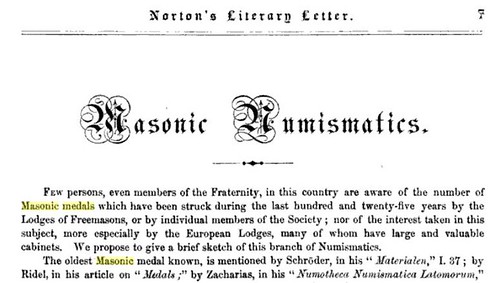
Click here to view article
